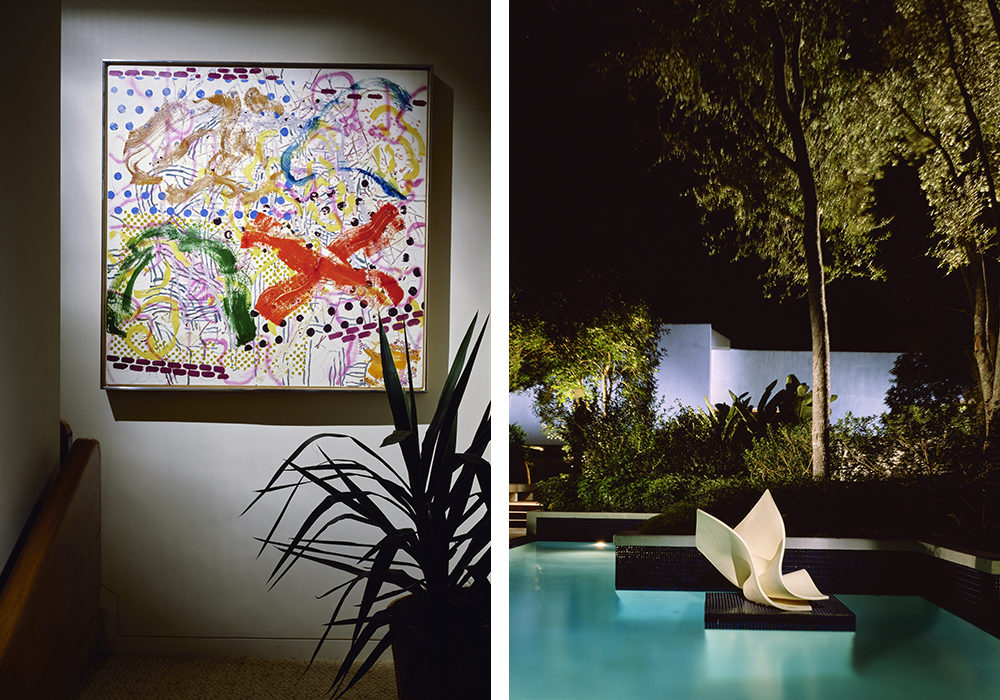What does it take to create a collection, let alone one that has impacted communities and history? Heather James Fine Art is proud to present selections from the collection of Gloria Luria. Luria is a pioneer of the art scene in Miami and Florida, for her collection and for her art gallery. It is through a development of networks that Luria has had a profound impact through which she has introduced artists who have become cornerstones of art history.
Gloria Luria molded a fledgling art scene through her collecting. First, in providing a foundation of pioneering artists by promoting them. Secondly, her collecting provided a space within which their works could be received and understood by new audiences. By revealing these intertwined relationships can we better understand not just artistic endeavors and not just important collections but how both are formed. Take, for example, the stunning painting in Luria’s collection by James Rosenquist to honor his friend and fellow artist, Gordon Matta-Clark. Here we see not just the friendship and connection between Matta-Clark and Rosenquist but also of Rosenquist and Luria.
Luria’s collecting habits also showcase the increasing globalization of the art world. Landmark COBRA artist, Karel Appel, sits side-by-side with Pop pioneer James Rosenquist. American Pop artist Larry Rivers exists next to Swiss artist and graphic designer Karl Gerstner. The act of collecting follows a single narrative line, that is to say, one acquisition followed by the next. However, the collection as a sum is not linear, it is a fabric field composed of threads connecting the artworks and artists thematically and historically. Collecting and collections are multivalent – to speak of one idea or theme, to pick up one thread of curiosity is simultaneously to understand and speak of another interpretation.
Thus, when we speak about the collection itself – the artworks, the artists, its influences – we should also understand how collecting and collections shape the collector. As Luria once said, “Best of all, the paintings let me dream.” These artworks are not just exemplary pieces by important artists, but are part of a landmark and storied collection, and carry with them this history. Moreover, as a whole, the collection transports us. We enter the feverish imagination of Appel and the profound friendship between Rosenquist and Matta-Clark in a single collection. The sculptures of George Segal literally occupy our physical space; we contend with suspended moments in time as we ask who each person is, where they came from and where they are going.
Luria has dedicated her life to fostering a thriving culture in the region from being a founding member and president of the Art Dealers Association of South Florida to helping bring the art fair, Art Miami, to the Miami Beach Convention Center. Her philanthropic generosity also extends to the performing arts, helping support Tanglewood and the Boston Symphony Orchestra, and the Adrienne Arsht Center for the Performing Arts and the New World Symphony. As seen in her philanthropic work, it is not just singular vision that creates a thriving community, but the networks and relationships that are formed that can sustain and grow it.











